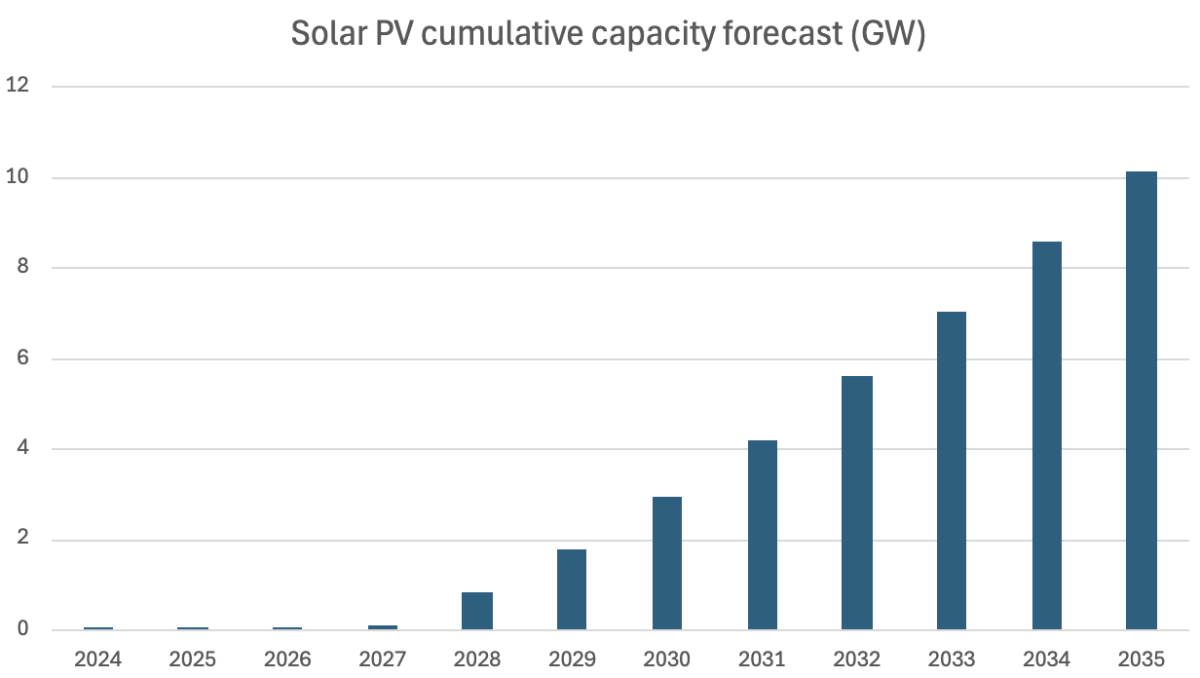Kuwait forecast to reach 2.9 GW of solar by 2030, 10.1 GW by 2035
Kuwait’s solar capacity, which stands at around 50 MW today, is expected to surpass 1 GW in 2029 before increasing rapidly over the first half of the next decade to surpass 10 GW by 2035, according to forecasts made by Rystad Energy.

From PV Magazine
Kuwait City
Image: JC Gellidon, Unsplash
Kuwait is on track to reach 2.9 GW of cumulative solar capacity by the end of the decade, up from a current 50 MW today, according to figures released by Norwegian research company Rystad Energy.
According to figures shared with pv magazine, Rystad Energy is forecasting Kuwait to surpass 1 GW of solar in 2029. The country’s solar capacity is then expected to grow more rapidly during the first half of the next decade, projected to reach 4.2 GW in 2031, 5.6 GW in 2032, 7 GW in 2033, 8.6 GW in 2034, and 10.1 GW in 2035.

Kuwait has set a target of increasing the share of renewable energy in its electricity generation from less than 1% today to 15% by 2030.
Rystad Energy’s analysis suggests that the target could be out of reach, with researchers projecting total renewable capacity – consisting of solar, onshore wind and solar thermal energy – will reach 3.3 GW by 2030, equivalent to 7% of Kuwait’s power generation, increasing to 11 GW by 2035, for around 20% of Kuwait’s power generation.
Major investments in both grid reliability and solar energy are planned in Kuwait as the country works to counter rising temperatures, aging energy infrastructure and unplanned power outages that make imports unavoidable. The nation is also planning to reduce domestic oil consumption by gradually replacing oil with natural gas in its power generation mix, both to free up crude for export and increase its reliance on renewables.
Nishant Kumar, an analyst for Rystad Energy, told pv magazine that Kuwait has made notable strides in advancing solar energy, particularly through the 1.1 GW Shagaya Renewable Energy Park tender, which revealed a list of six prequalified bidders in June.
Kumar suggested that to further accelerate solar deployment, regulatory processes should be streamlined via a single-window clearance system to speed up project timelines. He also said fostering public-private partnerships will be crucial to both unlocking new financing opportunities and accelerating large-scale solar projects.
Existing grid infrastructure must be upgraded, Kumar added, while investments in smart grids and energy storage will be necessary to handle the variability of solar power.
Kumar also called for Kuwait to adopt a nationwide net metering policy. “Given that the country benefits from subsidized fossil fuels, leading to low electricity prices for end consumers, implementing a clear, nationwide net metering policy is vital to promote both residential and commercial solar installations,” Kumar explained. “This policy should feature transparent compensation rates and simplified application processes to effectively incentivize consumers to adopt solar technologies.”
In May, the Kuwait Authority for Partnership Projects launched a tender for two solar power plants with a combined capacity of 500 MW in the Jahra region of Kuwait. The project is part of the Shagaya Renewable Energy Park, which consists of several renewable energy power plants, including wind, solar, concentrated solar power and battery storage.




